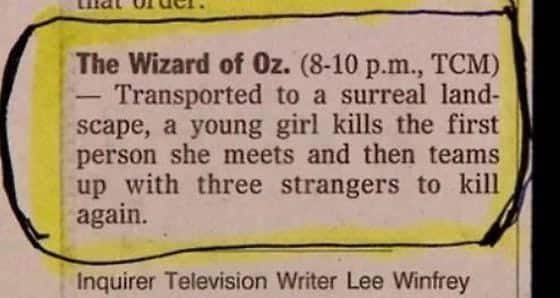
You’ve spent months — maybe years — pouring your heart into your story. But when it comes time to pitch it, you have only moments to grab your audience’s attention.
That’s where the power of a strong logline comes in. It’s your story’s first impression — a sharp, concise pitch that can make or break your project. An elevator pitch that can make, or break, your project. So, how do you craft one that stands out?
In this guide, we’ll break down what makes a logline effective and how you can write one that hooks your audience in seconds.
The Basics of a Logline
A logline is a one- or two-line summary of your story that encapsulates your story’s core elements, such as the protagonist, the goal, the conflict, and the stakes.
However, be aware this isn’t the same as a tagline or a synopsis. Think of taglines as a catchy phrase that goes on the poster and is used exclusively for marketing.
For example, the famous tagline from the movie Alien, “In space no one can hear you scream”.
A synopsis however goes deeper into the story and allows you to showcase the strength of your writing. A logline is more geared towards showing the strength of the idea itself.
So, if you were pitching Alien to a producer, you would start with the logline which is: “A space crew aboard a cargo ship investigates a distress signal, allowing a deadly alien lifeform to stow aboard their ship, intent on killing them off one by one.”
Related reading: Are Loglines Worth Your Time? || nofilmschool

Analyzing Examples of Successful Loglines
Every great movie begins as an idea that transforms into a screenplay, and every compelling screenplay starts with a succinct, thought-provoking sentence known as a logline.
Loglines are pervasive; look no further than the descriptions of films on streaming platforms like Netflix. If crafted properly, a logline teases enough information to hook the reader.
Let’s take a look at a few new, standout loglines:
- Everything Everywhere All at Once: “A middle-aged Chinese immigrant is swept up into an insane adventure in which she alone can save existence by exploring other universes and connecting with the lives she could have led.”
- Why it works: This logline clearly introduces the protagonist, the stakes (saving existence), and the central conflict (exploring other universes). It also hints at the genre (sci-fi, multiverse) and has an emotional hook by referencing the “lives she could have led.”

- Parasite: “A poor family schemes to become employed by a wealthy family by infiltrating their household and posing as unrelated, highly qualified individuals.”
- Why it works: This logline provides an intriguing conflict (infiltrating a wealthy family), sets up the stakes (potential downfall if caught), and conveys the genre (social thriller).
- Get Out: “A young African-American man visits his white girlfriend’s parents only to uncover disturbing secrets about them.
- Why it works: The logline hooks with a relatable premise and quickly escalates with the “disturbing secrets” angle, creating tension and curiosity. The conflict is clear, and it hints at both the genre (horror, psychological thriller) and the stakes.
- The Social Network: “Mark Zuckerberg, a Harvard student, creates Facebook, but soon finds himself caught in a web of lawsuits and accusations from his friends and business partners.”
- Why it works: This logline introduces a recognizable protagonist, the central conflict (lawsuits, betrayal), and the stakes (ruin or success) while being both direct and compelling.

- Moonlight: “A young African-American man grapples with his identity and sexuality while experiencing the everyday struggles of childhood, adolescence, and burgeoning adulthood.”
- Why it works: This logline promises a coming-of-age drama addressing societal issues.
All of these loglines share common elements: they introduce the protagonist, establish the stakes and objectives, reveal the conflict, and provide clues about the genre and story type.
By breaking these down, you can understand and apply the formula to your loglines.
Steps to Writing an Effective Logline
As mentioned, a logline is a concise, one or two-sentence summary of a television program, film, or book. It encapsulates the story’s central conflict, presents an overview of the plot, and provides an emotional “hook” to pique interest.
Constructing a logline requires distilling your story’s key components into their simplest form.
You might wonder if there is there a formula for crafting a great logline. Yes, there is! A solid logline typically follows this structure:
Setting + Protagonist + Problem + Antagonist + Conflict/Action + Goal
To illustrate, let’s dissect the logline from ‘Star Wars: A New Hope’:

- Setting – The Galaxy: A setting establishes the tone and genre. A story spanning galaxies clearly leans towards science fiction, carrying certain expectations. Ensure your setting is clear and helps build your narrative.
- Protagonist – A Spirited Farm Boy: While Luke Skywalker is more complex, a brief, potent description suffices for a logline. Use impactful adjectives for conveying a lot within limited space. Names are unnecessary unless your character is already famous.
- Problem – A Planet-Destroying Weapon: A problem introduces stakes. The Death Star, capable of annihilating planets, underlines the dire consequences if the hero fails. Your problem should be significant enough to compel your hero into action.
- Antagonist – A Sinister Imperial Enforcer: Often, a single figure or entity is the source of the hero’s problem. They present a formidable challenge, embodying everything the hero isn’t.
- Goal – Save a Princess (And The Galaxy!): Your protagonist needs a clear goal. Although Luke’s goal evolves, his initial objective shapes the broader narrative arc.
- Conflict/Action – Joins a Rebellion: Conflict arises when the protagonist’s goal is thwarted by the problem and antagonist. In response to this challenge, Luke joins the rebellion, demonstrating that the hero’s decisions must drive the plot.
Writing a compelling logline involves several steps. Start by identifying your story’s core elements: protagonist(s), goal, conflict, and stakes. If you’re dealing with an ensemble cast, remember to convey the primary focus of the story.
Condense these components into a succinct one or two-line pitch encapsulating your story’s essence, generally following the formula: protagonist + inciting incident + protagonist’s goal + central conflict.
Then, refine your logline, trimming down any non-essential elements until you’re left with an engaging elevator pitch. Don’t hesitate to test your logline on friends or family, as their reaction can indicate its effectiveness.
There are specific techniques to ensure your logline is memorable and engaging. Using active voice and vivid language helps paint a clear picture of your story. Highlighting the stakes and conflict generates intrigue, while maintaining simplicity and brevity makes your logline easier to remember and share.

Dive Deeper: Analysis and Examples of More Loglines
We shared some examples above of loglines that work and why. Now we’re going to take a deep dive into a logline that doesn’t work and see if we can fix it.
Logline: “A young woman discovers that she has special powers and must use them to save the world.”
This logline could be about Wonder woman, Super girl or even Dora the explorer!
The problem with this logline is that it is too vague. A young woman doesn’t provide any detail about the character. The special power could be flying or being a fast reader. Saving the world could be defeating an alien invasion or it could be recycling.
Let’s take another example:
Logline: “A detective investigates a series of murders and must catch the killer before they strike again.”
This logline is a bit more specific. It has a protagonist, an inciting incident, a goal and even a central conflict. However, it’s still isn’t specific enough. It covers the common tropes of a detective genre film but doesn’t give the reader anything new.
Let’s look at two better examples of these loglines.
- This is the logline for Wonder Woman: “When a pilot crashes and tells of conflict in the outside world, Diana, an Amazonian warrior in training, leaves home to fight a war, discovering her full powers and true destiny.”
As you can see this logline could only be about the movie Wonder Woman. The more specific you can make your logline the more it will stand out.
- This is the logline from Zodiac: “Between 1968 and 1983, a San Francisco cartoonist becomes an amateur detective obsessed with tracking down the Zodiac Killer, an unidentified individual who terrorizes Northern California with a killing spree.”
This logline is extremely specific, it gives the setting, the protagonist, the goal and the conflict.
Conclusion
Crafting a compelling logline is a crucial skill for any writer looking to pitch their story successfully.
By understanding the basics of logline writing, analyzing successful loglines, following the steps to writing an effective logline, and using tips and techniques for writing a memorable logline, you can increase your chances of getting your work noticed and ultimately achieving success as a writer.
Remember that a logline is an elevator pitch for your story, and a good one can make your project, while a bad one can break it. So take the time to craft a strong logline that effectively conveys the essence of your story and highlights what makes it unique and compelling.
It may change and evolve over the course of a project so remember to keep rewriting it as your project develops.
Frequently Asked Questions About Logline Writing
A logline should be short and sweet, typically consisting of one or two sentences and a usually around 25-30 words.
Absolutely! Loglines can be changed after they’re written. It’s common for loglines to transform and shift as the story develops and takes shape. As the plot, characters, and themes become more defined, the logline may need to be tweaked to better capture the current state of the story or to emphasize new aspects that have emerged.
Here are a few things to ask yourself about your logline:
– Does it clearly and concisely convey the premise of your story?
– Does it grab the reader or listeners attention?
– Does it highlight what makes the story different or compelling?
– Is it easy to pitch to someone in a few seconds?
While specificity is important, a logline should still be concise. Avoid too much detail that might confuse or overwhelm. Focus on the key elements of the story and leave the rest to the imagination.

Take your screenwriting skills to the next level with these articles:
- 10 Must-Know Tips for Researching Your Screenplay
- What is a Slugline? Definition & Examples
- What are Parentheticals? [When, How and Where To Use Them]

